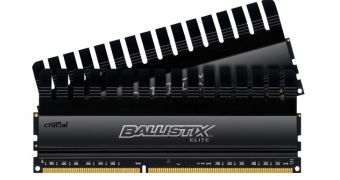We do not really need to repeat how weak the DRAM industry is at the moment, and has been for a couple of years for that matter.
No one is actually foreseeing an improvement on this front, not in the near future. There is something that both manufactures and analysts agree about though: whatever companies are currently trying isn't working.
The decline in consumer interest for memory has been apparent since more than two years ago, but there wasn't much anyone could do about it.
The only idea anyone could come up with was to boost speed and capacity per module, and speed up development for manufacturing technologies.
The belief was that customers would be persuaded to upgrade if memory became good enough.
Unfortunately, brand vendors and manufacturers pushed themselves into a corner, as demand never quite reached the level of supply again, hence the current state of affairs, where PCs account for less than half of all DRAM sales and DDR3 sells poorly even with 4 GB modules at under $16 / 16 Euro.
Now, it has finally happened: manufacturers have decided to stop trying. Rather than pushing for better technologies, they will plan more strategically, on a yearlong basis.
Spending for advanced manufacturing processes will be reduced, manufacturing equipment won't be so readily bought and improved.
All in all, output will be cut and DRAM will generally get better more slowly than over the past two-three years.
Currently, 30nm is the mainstream technology for Samsung and SK Hynix, the two primary producers of random access memory chips.
The 20nm node was supposed to go over 50% output next year (2013), but now it is more likely for the companies to assert more control and keep it below that mark. In this context, it is probably a fortunate thing that DDR4 won't become a factor until 2014.

 14 DAY TRIAL //
14 DAY TRIAL //